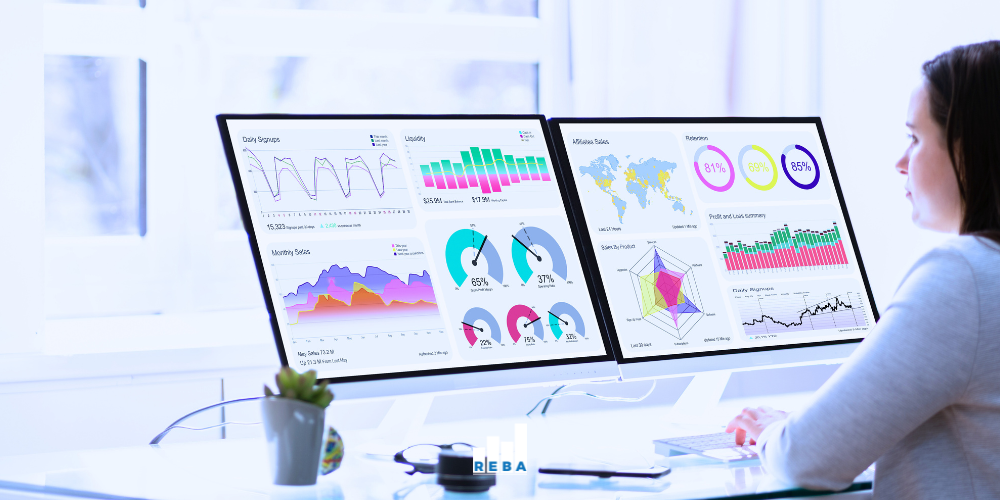Business intelligence (BI) gives you the ability to transform raw data into meaningful and useful information to identify issues in the moment, course correct to avoid future pitfalls, and make smarter and faster decisions to optimize your business strategy. The key difference between raw and transformed data is the ability to explore the data and relationships in an efficient way as opposed to being limited to a rigid view of the information. Data visualization tools are key to this competency.
What is Data Visualization?
Data visualization is the visual representation of data. Whether through charts, graphs, infographics, maps, scatterplots, histograms, and more, visualization allows information and data to be represented more pictorially; one that often makes data more easily accessible and consumed.
Why is Data Visualization Important in Multifamily?
Data visualization helps the human brain process complex and expansive data sets and reports allowing people to come to quicker conclusions about what the data is telling them, or in the instance of data visualization, what the data is showing them.
With real estate business intelligence, added data visualization tools such as Unit Maps allow asset managers and operations professionals to spatially visualize their property data. Seeing historical and current data sets on an elevation view of a building or in a stack of units of different types provides contextual information not able to be gained using a traditional spreadsheet or chart view.
Using multifamily real estate business intelligence with a Unit Map makes it easy to:
- Understand property performance at the most granular level
- Identify where there is something geographically appealing, or unappealing, about an area, side, or floor of the community or building
- Quickly spot trends, and reasons for long-standing vacant (LSVs) or high-turnover units and gain clarity around unit-specific nuances that may impact leasing and NOI
Unlock your potential insights with REBA's BI tool today
4 Data Visualization Scenarios
Here are 4 scenarios of how multifamily leaders can leverage layering map visualizations over business intelligence data sets, especially when being physically on-site is not possible:
- A Pricing & Revenue Manager is looking at availability through an elevation visualization and notices that most of the available homes are on the top floor. A quick check of average days on market historically confirms that these units take longer to lease than others so they implement a small $10 reduction on 80 third-floor homes.
- A Community Manager asks for a $50 price reduction on 5 homes that are LSVs. The Pricing & Revenue Manager looks at a floor plate visualization and notices that all five of these are located in the back section of the community and discover that leasing agents tend to not tour prospects in that part of the community leading to low leasing velocity.
- An Asset Manager is preparing for a quarterly review. Looking at a map view of historical service request counts, they notice a cluster of higher requests. Digging into the data, they discover a need for additional maintenance to avoid a property leak.
- A Developer and Community Manager meet weekly to review the leasing velocity of a 400-home high-rise development. They start each conversation with a look at the occupancy and availability through an elevation visualization. Seeing some floorplans/stacks lease more quickly and others more slowly, they decide to raise rents sooner than they would have without that view.
Combining multifamily software with data visualization offers a complete picture of property performance and much-needed visual context to industry leaders looking to understand trends and identify potential issues before they arise, resulting in millions of potential savings and increases in NOI.
Featured image by Rick Mason on Unsplash.





SHARE